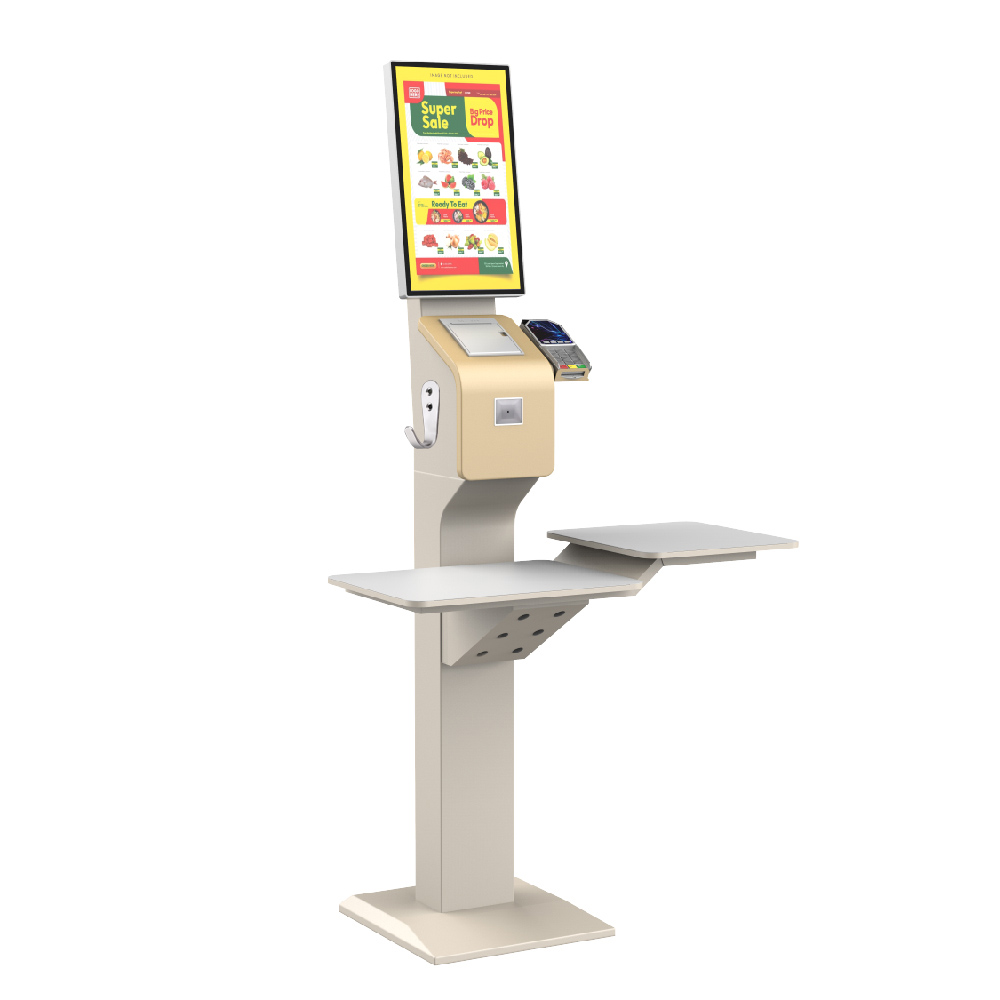A self-ordering kiosk is an automated self-service device equipped with a touchscreen interface that allows users to browse menus, select items, and make payments without staff intervention. These kiosks are typically used in restaurants, fast-food outlets, and other food service locations to enhance customer experience, improve ordering efficiency, and reduce wait times.

Industry Uses:
1. Fast-Food Outlets: Provide quick and convenient ordering and payment options, reducing customer wait times.
2. Restaurants: Allow customers to browse menus, customize orders, and make payments, improving restaurant operational efficiency.
3. Cafés: Enable customers to place orders and make payments themselves, streamlining the ordering process.
4. Buffets: Offer self-service ordering and payment, making it easier for customers to select and pay for their meals.
5. Cinemas and Entertainment Venues: Allow customers to quickly order and pay for food, enhancing service speed and satisfaction.
1. Efficiency: Provide quick and convenient ordering services, reducing queues and wait times.
2. User-Friendly: Offer an intuitive interface, simplifying user operations and enhancing customer experience.
3. Cost Savings: Lower operational costs by reducing the need for ordering staff.
4. Enhanced Experience: Allow customers to freely browse menus and customize orders, increasing satisfaction.
5. Data Collection: Automatically collect customer preferences and order data, helping to optimize menus and services.
6. 24/7 Availability: Provide round-the-clock ordering services, allowing customers to order at any time.
1. Touchscreen Display
- Allows users to browse menus, select items, and make payments. Typically, high-resolution capacitive touchscreens are used to ensure smooth operation and clear display.
2. Processor
- Provides computing power to support the operation and running of applications on the kiosk.
3. Network Connection Module
- Supports wired and wireless network connections to ensure real-time communication and data transmission with backend systems.
4. Printer
- Prints orders and receipts. Usually equipped with thermal printing technology to enhance printing speed and clarity.
5. Barcode Scanner
- Used to scan coupons, membership cards, and other barcodes.
6. Card Reader
- Supports reading magnetic stripe and chip cards for processing credit card payments.
7. Cash Acceptor
- Supports cash payment options, allowing customers to pay with cash.
8. Audio Output Devices
- Provide voice prompts and multi-language support to enhance the user experience.
9. Durable Enclosure
- Protects internal components from damage and unauthorized access, typically featuring protection ratings to suit various environments.
1. Operating System
- Common operating systems include Windows, Linux, or Android, providing a stable running environment and diverse development interfaces.
2. Application Software
- Custom-developed self-ordering applications responsible for interface display, user interaction, and data processing. Designed in a modular fashion to facilitate feature expansion and updates.
3. Backend Management System
- Responsible for device monitoring, data collection and analysis, content management, and system maintenance. Provides remote monitoring and management functions to ensure the normal operation and timely maintenance of the devices.
4. Database System
- Stores user data, transaction records, and log information. Common database systems include MySQL, PostgreSQL, etc.
5. Network Communication Module
- Uses TCP/IP protocol to exchange data with the backend server through wired or wireless networks. Supports VPN and other secure connection methods to ensure data transmission security.
6. Security Module
- Includes firewalls, encryption modules, authentication systems, etc., to ensure the security of data and user information.
7. Interface Module
- Provides interfaces with payment gateways, restaurant management systems, and customer relationship management (CRM) platforms to ensure seamless integration and data sharing with external systems.